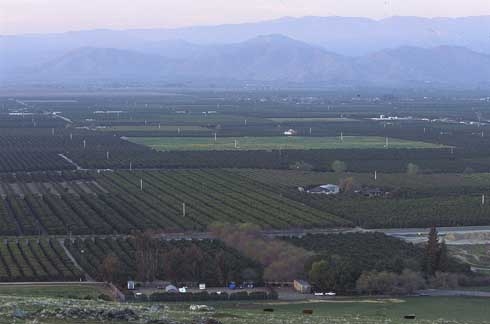VOC regulations affect the San Joaquin Valley.
It's that time of year when volatile organic compound (VOC) emissions released from nonfumigant pesticide applications can impair air quality. Regulations are in effect that growers and pest control advisers should know about, especially for the San Joaquin Valley starting May 1.
Here are highlights from Pam Wofford, Department of Pesticide Regulation (DPR), regarding the San Joaquin Valley. Pest control advisers cannot recommend and growers cannot use:
- high-VOC products containing abamectin, chlorpyrifos, gibberellins, or oxyfluorfen
- between May 1 and October 31, 2015 and again for May – Oct. 2016
- for alfalfa, almond, citrus, cotton, grape, pistachio, or walnut
Review the updated factsheet for nonfumigant regulations, available on the DPR website. Limited, specific exceptions are allowed. For exceptions, a PCA recommendation is required.
No regulations affect the use of low-VOC products. Pest control dealer requirements remain unchanged, as do fumigant VOC requirements.
Nonfumigant VOC emissions regulations for the San Joaquin Valley strive to maintain VOC emissions below the state implementation plan goal of 18.1 tons/day. In 2013, emissions increased to 18.28 tons/day from 16.26 tons/day in 2012.
View the 2013 VOC inventory for a report on all five ozone nonattainment areas on the DPR website. In addition to state implementation goals, there are VOC regulation benchmark goals to reduce emissions by 12 to 20% from emission levels in 1990. In 2013, VOC levels were reduced 11 to 88%.
VOC resources:
- Department of Pesticide Regulation VOC information
- Nonfumigant pesticide product VOC information
- UC IPM VOC: learn to minimize emissions and use DPR's VOC calculators
- UCIPM Pest Management Guidelines

Picture showing smoggy conditions.